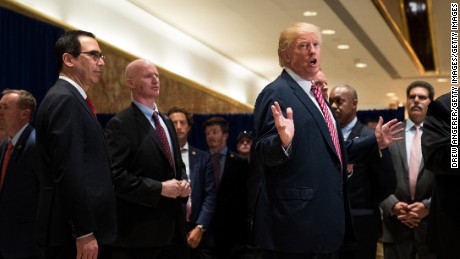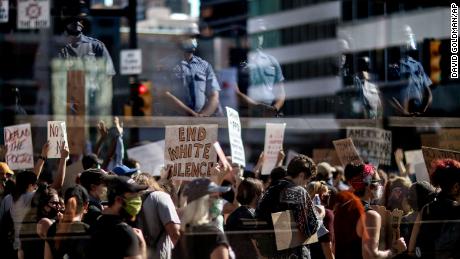For newly elected presidents, the arrival of summer has often been a cause for dread. Here are the reasons that first summer is so tough.
For most Americans, the unofficial arrival of summer with Memorial Day is a cause for celebration. But for newly elected presidents, it’s more often been a reason for dread. Sagging job approval ratings, unanticipated challenges at home and abroad and, above all, diminishing legislative momentum have been hallmarks of the first summer in office for recent presidents.
The trajectory wasn’t identical for all of the recent presidents. Clinton, for instance, suffered his sharpest declines in late spring and early summer (right around now), and actually recovered some of his lost ground in July and August. Obama suffered more steady erosion through his first months; W. Bush bounced around the most (until his response to the terrorist attack on September 11, 2001, catapulted him to an elevated approval rating he maintained for months), while Trump’s numbers started very low (44% approval in his first Gallup survey) and edged into the thirties, a nadir that only Clinton also hit by the end of his first summer.
Reasons that first summer is so tough
Why is a summer slump so common for new presidents? Newman says the dominant answer among political scientists is shifting behavior among other political leaders and the media.
“Early in a president’s term, media coverage and many politicians from both parties stay relatively positive (or at least less negative than later),” he wrote me in an email. “Opposition politicians tend to mute their criticism, at least a bit, in the wake of an election defeat, offer mild assurances along the lines of ‘let’s wait and see what policies the new president will pursue’ and maybe mention hopes of working together on common goals. Media coverage tends to follow suit such that the overall tenor of coverage is relatively positive.”
But with time, that deference dissolves.
“After six months or so, opposition politicians (and maybe even some politicians in the president’s own party) have leveled more criticism and media coverage has become more negative compared to earlier,” Newman added. “When given more negative coverage and hearing critiques from prominent politicians, the public’s support dips.”
But perhaps the most common thread in the summer slump for these presidents is a shift in focus from executive action, which typically comes across as crisp and decisive, to legislative negotiation, which is inevitably lengthy and messy. As the veteran Republican pollster Bill McInturff notes, immediately upon taking office, presidents routinely unleash a flood of executive actions; when the White House shifts partisan control, that torrent includes reversing many of the executive actions taken by their predecessor.
“Every administration starts with news that gets covered as ‘action’ — executive orders, Cabinet slots being filled — all pushing a new agenda different than their predecessor,” McInturff points out. But over time, he adds, “Executive orders run out and the action is replaced by transactional and messy legislative back-and-forth. Favorable numbers drop.”
Clinton and Obama may have suffered sharper first-summer declines than Trump or George W. Bush (who pushed little legislation after the passage of his big tax cut in May 2001) precisely because their legislative ambitions were so much greater.
David Axelrod, the former chief political adviser to Obama and a senior CNN political commentator, for instance, says flatly that “Our summer slump was directly related to the size of our ambitions.”
Clinton spent his first summer ensnared in the excruciating effort to pass his budget plan, which didn’t clear the House and Senate until August 1993 and then only by a single vote in each chamber.
“For Clinton and Obama their ‘recession’ had ended but the recovery had not begun,” says Rahm Emanuel, who served as Obama’s chief of staff and a senior White House adviser to Clinton. Bush and Trump, the two most recent Republican presidents, inherited economies on stronger trajectories.
With the economy steadily recovering from the pandemic, Biden is in a stronger position on that front than either Clinton or Obama. And Republicans so far have failed to mobilize against him anything like the grassroots resistance from the tea party or even the eventual uprising from gun owners, small business groups and conservative Christians that coalesced against Clinton.
Biden’s complicated choices
The Clinton and Obama experiences during their difficult first summers offer complex lessons for Biden today. Clinton ultimately passed his economic agenda through the special budget reconciliation process without any Republican support by unifying just enough Democrats in each chamber. Obama initially chose the opposite route on his health care plan: He let Senate Democrats spend months in negotiations seeking agreement with Republicans, while the bill lost momentum and opponents mobilized. Eventually, Obama was also forced to pass his Affordable Care Act without support from a single Republican in either chamber.
Bill Galston, a senior fellow at the Brookings Institution and the deputy assistant for domestic policy during Clinton’s first year, believes Biden and Democrats would be best served by taking a deal, even if it substantially retrenches his plan. “If he could get agreement on a $1 trillion or $1.1 trillion traditional infrastructure bill that would be what he called on another occasion ‘a big f-ing deal,’ ” Galston says. While that might mean postponing or downscaling some of the priorities Biden has identified, Galston adds, it would allow him to say that “after decades” of partisan conflict, “I have put together what people said couldn’t be done, a coalition spanning the parties.”
Besides, Galston continues, even if Biden chooses to pursue a Democrats-only strategy it’s not clear that he can secure support from all 50 Senate Democrats — particularly Joe Manchin of West Virginia and Kyrsten Sinema of Arizona — for an infrastructure package nearly as expansive as he proposed.
Axelrod agrees that on balance those considerations should push Biden toward accepting an infrastructure deal with Senate Republicans, if at all possible.
“That would be important for Manchin because then he can point to it and say we did find common ground, the administration did stay at the table, they did show their good faith,” Axelrod told me.
If Manchin can tout such a deal, Axelrod adds, that might it easier for him to differentiate Republican resistance to voting rights as unreasonable partisanship — and thus make it easier for him to support such legislation, even if that requires exempting it from a certain GOP filibuster.
“If you get this infrastructure deal you may then be able to get Manchin to vote for a carve-out on issues that relate to issues on voting and elections,” says Axelrod.
However the legislative fights unfold this summer, public attitudes about each new president are so polarized along party lines that Biden’s approval rating, which has remained quite steady at slightly more than 50%, may not oscillate as much as previous presidents’ did.
“That variability has definitely declined,” says Newman.
Either way, like his predecessors, Biden will likely find the steamy months of his first White House summer to be the blazing crucible that shapes his first term.
![]()








